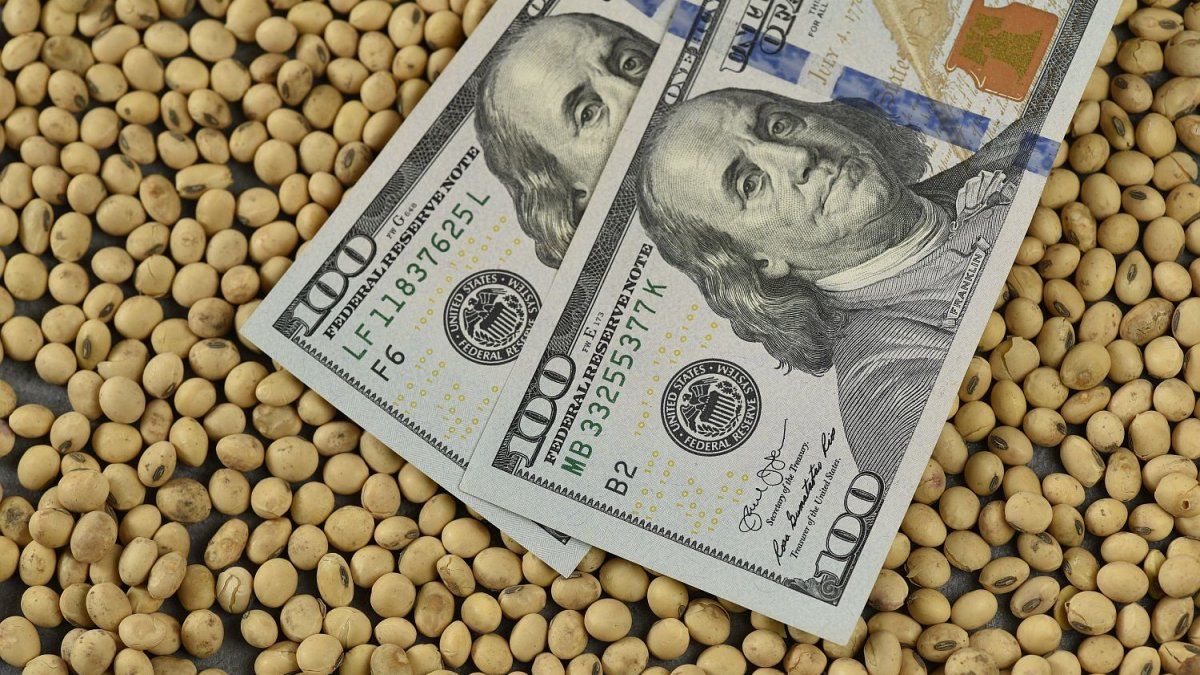He field is going through a key moment. After the devaluation of December 13, there was a moment of strong currency settlement due to the improvement in exchange rate for exporters. But now, the feeling is one of caution. This Thursday, the Liaison Table will be participating in a key meeting with the Minister of Economy, Luis Caputo, and they will file their first formal complaint, face to face, seeking changes regarding withholdings.
The meeting time is at 3:00 p.m. Caputo will receive the Argentine Rural Society (SRA)to the Agricultural Intercooperative Confederation (Coninagro)to the Argentine Rural Confederation (CRA) Yet the Argentine Agrarian Federation (FAA), among other industrial chambers and services.
The main axis of the claim is the withholdings that, although they were removed in their entirety for the regional economies and the wine industry, They rise from 31% to 33% for soy by-products and will be 15% for the rest of the cereal and sunflower complex. A reference in the sector, in dialogue with Ambit, Before the meeting he stated: “With 15% for sunflowers and corn, you detonate them, because you kill the areas far from the ports with freight.”
On December 21, the grain transport agreed to a 45% rate increase, however, the increase in fuels was 64% (37% on December 13 and 27% on January 3), significantly increasing costs.
Dollar: late?
Another reason given by the sector is the exchange rate. “We have to see how competitive it is, the ideal would be the unification of the exchange rate and floating it,” commented the source.
In this sense, the economist Andres Salinas He explained why as the days go by the dollar is already beginning to generate doubts. “The issue is that the exchange rate jump, added to the package of deregulations that is being carried out and is being attempted to be approved, generates upward pressure on pricesmaking the inflation expectations rise, while there is the Government’s objective of maintaining an exchange rate moving at 2% monthly. Therefore, the other incentive that exporters have is that of wait for a correction, since the delay is going to begin to be increasingly evident.”
He futures market already discount that for March the dollar is going to be around $960, an increase of 18% compared to current prices, well above the intention of the Ministry of Economy. “What we can assure then is that the incentive for exporters to liquidate is increasingly less, mainly due to the exchange rate delay and, on another level, due to the increase in withholdings that makes them profitable,” added Salinas.
“There is a lot of noise with the export dollar 80/20, because it is only paid when it is for available merchandise negotiated in pesos. This means that many do not want to anticipate sales, since they are in dollars (per tons) and then, when pesified, it is done at the official exchange rate. Thus, they stop earning 20% of the gap that today, being above 50%, is a problem,” he added. Roman Dante, professor and researcher at the Center for Agribusiness and Food of the Austral University. In any case, he clarified that “the “Inflation is eating up the initial devaluation and invites us not to sell.”
International prices
The Chicago screens They come bringing bad news. Soybeans, which were priced at around US$494 per ton at the end of the year, today it is below US$460 and with a downward trend, as shown by future contracts. If compared to the peak of By mid-2023, where it reached US$521 per ton, these are austere prices. Thus, the price of oilseed in the Chicago market It is the lowest since November 2021, while that of corn fell to levels similar to those of December 2020. The sector is beginning to make calculations.
“He producer does not want to sell due to low prices, although the government accelerates the dollar it does not add to it. “We cannot continue with the exchange rate differential,” explained the analyst. Salvador Di Stefano. The liquidation, in this context, is delayed in the face of a better incentive.
According to Romano, the sale of producers today is “minimal” and in soybeans it does not even reach 1% of the expected production “when other years it was 7%.”
“Prices fell below the level they need to be profitable. Something similar happens in corn. In any case, since they are late and have many maturities not only for this year but also for debt from the previous year refinanced by the drought, they are going to have to sell before 6/30 to get cash. That will give you a sales floor. But if prices do not improve, and the outlook for the dollar and export duties becomes clearer, we will continue to see delays,” he added.
Dollar: the numbers that the Government sees
Despite the sector’s complaint, the Government sees other numbers from the fiscal point of view and is going to try boost income, at the same time as making the cut in other areas. If there is one thing that is clear, it is that the objective is to increase the firepower of the Central Bank to calm the waters when there is nervousness in the market.
The latest estimate of the Rosario Stock Exchange (BCR) speaks of a total dollar inflow of US$28.3 billion between soybeans and corn, of which US$20,000 million would be contributed by the soybean complex and US$8,300 million by corn.
As to collection via withholdings, A very important leap is also expected, especially if the increase proposed by the national government to export duties on corn and soy derivatives is approved.
If there is a green light for this initiative, the collection via withholdings in the soybean complex would imply an increase of almost US$200 million, going from US$5,796 to US$5,994 million, while in corn the additional contribution would be US$154 million up to a projected total of US$1,224 million, according to the estimates of the Rosario stock market.
Source: Ambito




